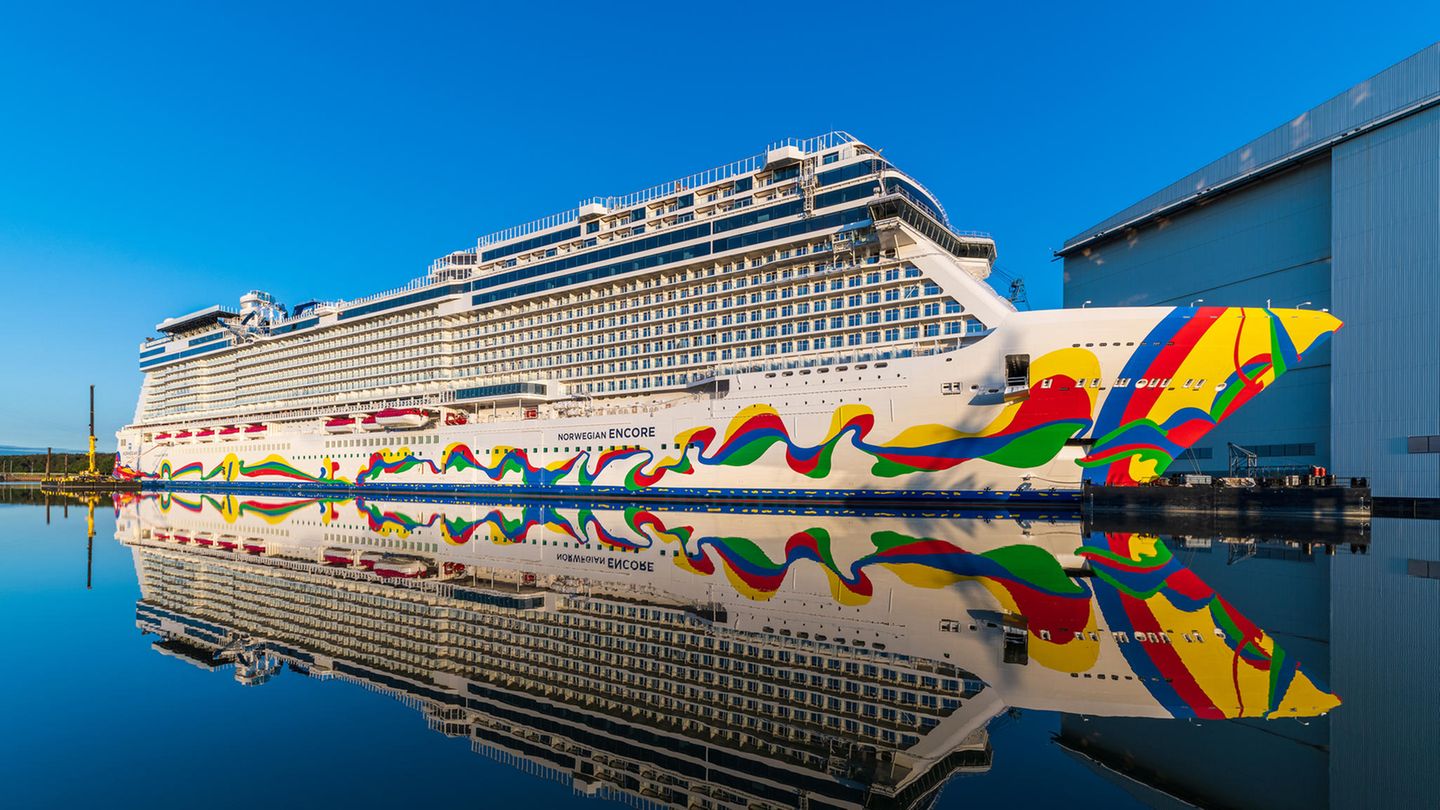The federal government has agreed to invest in the struggling Meyer Werft shipyard. The government apparently also considers the shipbuilder to be useful for military-strategic reasons.

This is original content from the Capital brand. This article will be available for ten days on stern.de. After that, you will find it exclusively on capital.de. Capital, like the star to RTL Germany.
The Bundestag’s budget committee has cleared the way for the billion-euro rescue of Meyer Werft. It voted in favor of the federal government contributing the planned 200 million euros to the stabilization. Now the state of Lower Saxony must agree to participate in order to rescue the Papenburg-based company from its financial crisis that is threatening its existence.
Meyer builds cruise ships
The shipyard is primarily known for its cruise ships. However, the German government also apparently recognizes a possible military use and is therefore prepared to undertake the rescue operation. “If the geopolitical situation worsens, Meyer Werft could potentially play a significant role in German military shipbuilding,” the “Handelsblatt” quotes from a report from the Federal Ministry of Finance to the Bundestag’s Budget Committee, which is classified as “classified information.”
“It seems to me to be an ad hoc justification,” says Max Johns, Professor of Maritime Management at the Hamburg School of Business Administration, to Capital. After all, with Thyssenkrupp Marine Systems and Lürssen Werft, Germany has a number of purely commercial shipyards that are established in military shipbuilding. “I think it’s risky to keep a shipyard in the dark with the very vague idea that something could happen there at some point.” In his view, politicians are now “looking for reasons after the fact” after the rescue promise.
Meyer Werft could be useful for military shipbuilding
Until now, the German government had cited the great importance of Meyer Werft for the German shipping industry as the main reason for the entry and emphasized the safeguarding of thousands of jobs. “By temporarily stabilizing the shipyard financially, we are securing the future of the shipyard and thousands of jobs,” said SPD budget officer Dennis Rohde. The Meyer Werft is an important driver for the maritime economy and an employer for around 3,500 employees as well as well over 10,000 employees in the supply industry. The federal and state governments now share responsibility for getting the company out of financial difficulties.
The report from the Ministry of Finance shows the geostrategic considerations: The shipyard could be used for the navy and military shipbuilding. There is a participation in the new construction project of the Class 707 marine fuel supply vessel, which is being manufactured together with the Naval Vessels Lürssen shipyard group, reports the “Handelsblatt” from the paper. The shipyard is also to build a new quay on the southern site of the Warnowwerft naval arsenal, which could also be used by the neighboring Neptun Werft, the German army and NATO.
Reason for the crisis: management errors
From the perspective of shipping expert Johns, a deployment as a naval shipbuilder would be a major strategic change of direction for Meyer Werft. Such a shift would require discussion, also because taxpayers’ money would be used, says John. But there was no time for that now.
The reason for Meyer Werft’s crisis is not a lack of orders, but management errors. “A maritime company like this can get into trouble because it works poorly or doesn’t make good products,” Johns recently told Capital. “In this case, however, one of the most important reasons for the crisis is a management error: the contracts for the ships do not contain any escalation clauses, for example for material costs.” Contracts for new ships that were signed before the coronavirus pandemic therefore do not provide for any adjustment to the sharp rise in energy and raw material prices since then. It is also common in the industry for 80 percent of the construction costs to be paid when the ship is delivered – so the shipyard has to finance the construction with loans.
Meyer Weft must therefore raise almost 2.8 billion euros by the end of 2027 to finance the production of new ships. The agreements must be in place by September 15. The federal government and the state of Lower Saxony want to take over 80 percent of the shipyard in equal shares and provide a total of 2.6 billion euros for this. This also includes guarantees of around one billion euros each to secure loans. The federal government expects that the shipyard will still make losses in 2025 and 2026 even if the restructuring plan is implemented.
Exit scenarios? Unknown!
“If jobs are preserved and the money can be taken out again, then that is a sensible stopgap measure,” says Johns about the state’s involvement. “But how specifically the federal government is pursuing this goal and what the exit scenarios look like is not clear to me at the moment.” The budget committee should have taken a position on the exit scenarios, but now they have chosen the easy way out and postponed the problem until after the next federal election.
Both Berlin and Hanover say that the shipyard should not remain in public hands in the long term. However, there is no fixed exit date for the state participation.
Source: Stern




